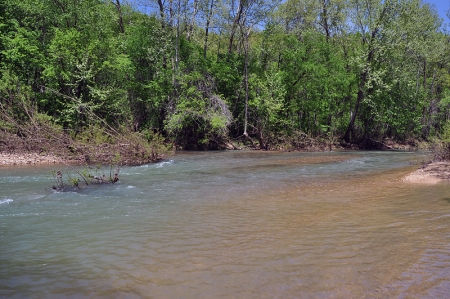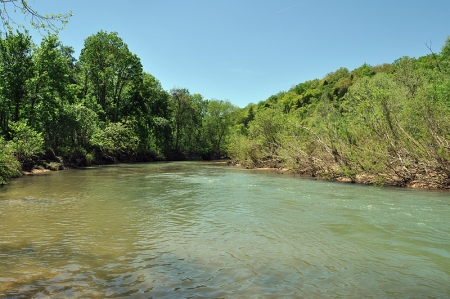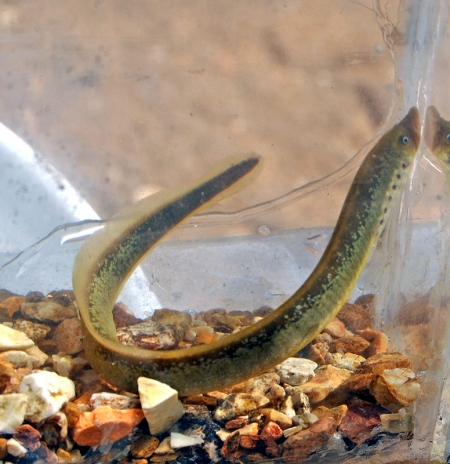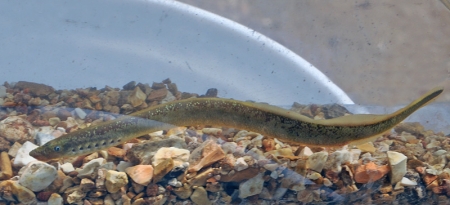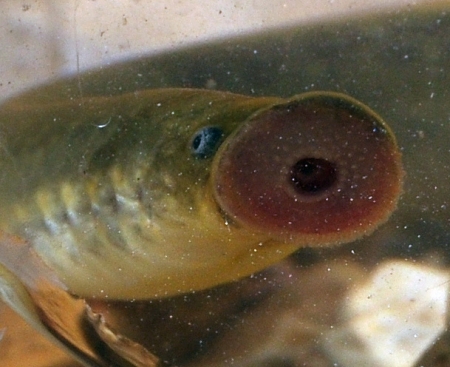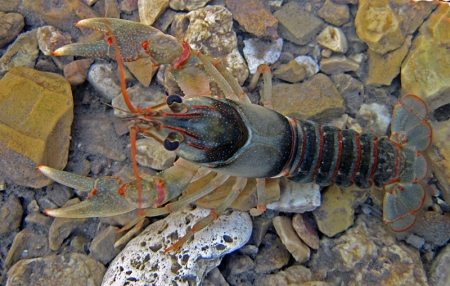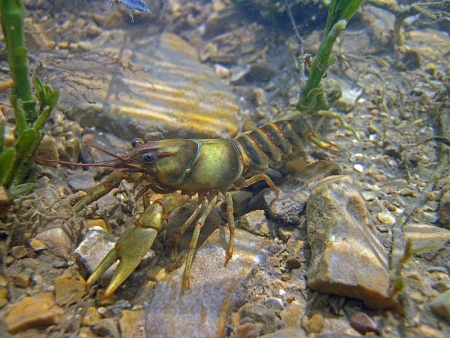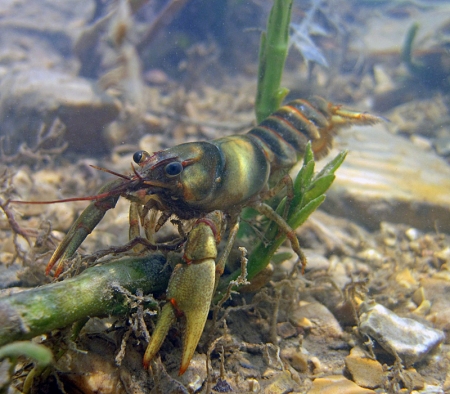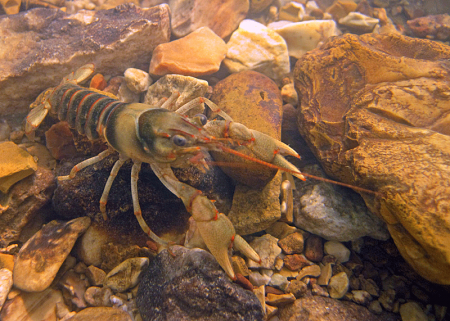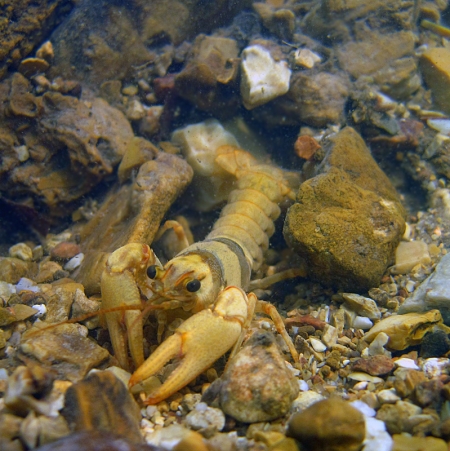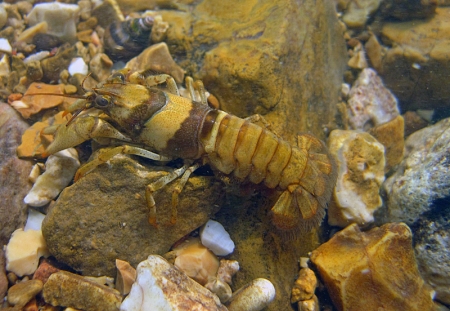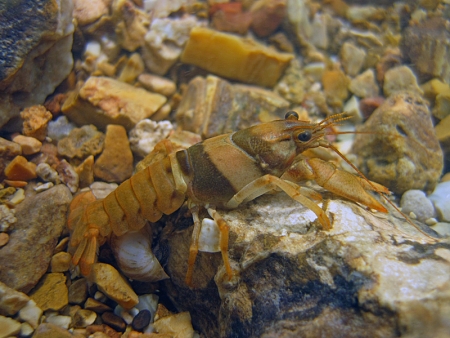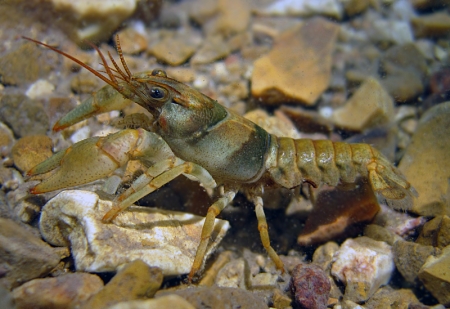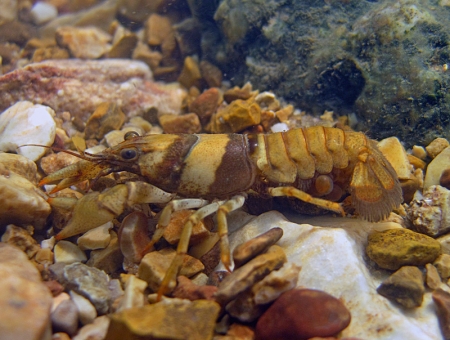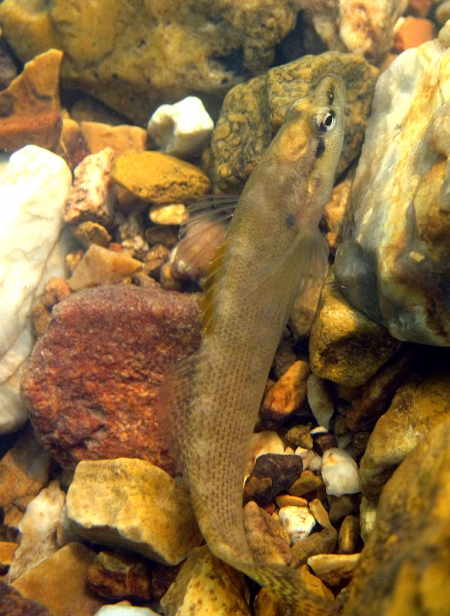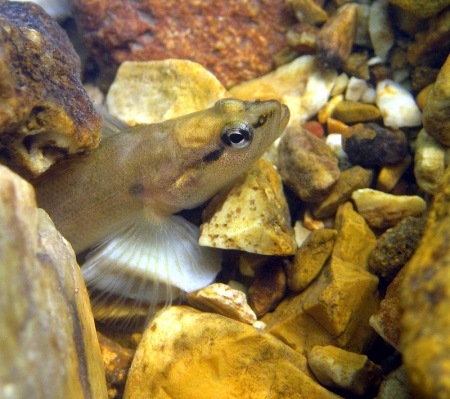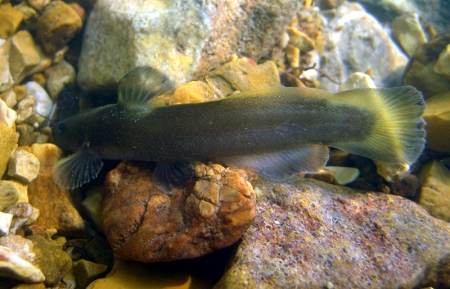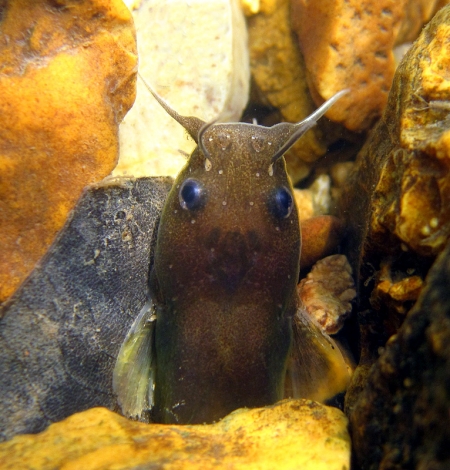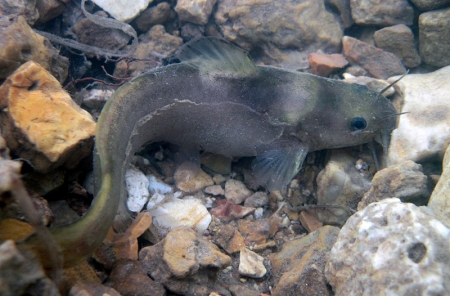The Short Bend in question is, of course, MDC’s fishing access on the upper Meramec River in Dent County. Nine miles northeast of Salem on Highway 19, Short Bend is well up towards the Meramec’s headwaters, the river itself being comparable in size to the Jacks Fork near Blue Spring. On the day of our visit, May 6, the river was still a little higher than usual and somewhat milky colored.
I was afraid that it was too dingy for photography, but having driven two hours to get there, I hit the water anyway. It was a good decision. While the water wasn’t perfectly clear, it didn’t really interfere with photography that much and the photos cleaned up nicely in Photoshop. The goal of the trip was to find and photograph Orconectes medius (Saddleback Crayfish) and the Meramec color variations of O. luteus (Golden Crayfish) and O. punctimanus (Spothanded Crayfish.) Any other finds would be gravy.
The first rock flipped produced a squirming, eel-like creature that simply would not hold still for a second. Unable to photograph it in the river, I managed to net it and place it in one of the tanks I carry in the truck. Even in the tank, it would not settle down and despite taking over 50 photos, I only ended up with fair shots at best.
I was sure the critter was a lamprey and later confirmed it with William Pflieger’s The Fishes of Missouri. The Meramec basin has only two species of lamprey, Ichthyomyzon castaneus (Chestnut Lamprey) and I. fossor (Northern Brook Lamprey,) this being an adult (it has eyes) of the latter based on the fact that all of the disc teeth are poorly developed and the disc is smaller than the head when expanded. Lampreys resemble eels, but lack jaws and their skeleton is made up entirely of cartilage, no bone present at all. In fact, lampreys aren’t closely related to bony fishes at all.
All lampreys go through both larval and adult stages. The eyeless larvae burrow in the soft sediment at the bottom of a stream where they feed on micro-organisms and organic matter. After a year or more, depending on the species, the larvae transform into adults during late summer and fall. Some species are parasitic on fish as adults, migrating to large rivers and lakes to spend a year or two feeding before returning to smaller streams to spawn. The other, non-parasitic adults overwinter in the smaller streams and do not feed before spawning in the spring. Both parasitic and non-parasitic species die soon after spawning. I. castaneus is a parasitic species, I. fossor is not .
After the lamprey, crayfish quickly took over the show. First was O. luteus.
This is the same species that I’ve posted photos of from the Current River basin many times, even though color-wise, they look different. Where the Current River population has an orange-ish brown/tan base color, those from the Meramec basin appear more greenish-yellow to me. And the Current River version has nothing like those bright red highlights and black abdomenal segments. The individuals in the Meramec also reach a larger maximum size than those in the Current.
O. luteus was probably the most abundant species, but O. medius wasn’t far behind. The species occurs only in the headwaters of the Meramec and it’s tributary the Big River (it does not occur in the Bourbeus River, another Meramec tributary,) yet it’s still usually abundant when you do find it and this location was not an exception.
O. medius is a smallish crayfish and none of the ones shown exceeded two inches including the last, which was a female carrying eggs, something I did not notice until later while looking at the photos. Ironically, to my eyes, O. medius looks very much like Current River O. luteus, certainly more so than actual O. luteus from the Meramec do.
A few O. punctimanus did turn up, but all were small and dark colored, not the large adult I’d hoped to photograph. So, onto the fish…
This is a Fantail Darter (Etheostoma flabellare,) the same species I posted about on the Rippee Creek/North Fork post. But this time, I got to grab a few “in the river” instead of “in the tank” shots.
And finally, a pair of madtoms (the first two photos are the same fish.)
I’m positive that the fish in the third photo is Noturus exilis (Slender Madtom) and the other may be N. exilis as well, but it appears to lack the dark edges to the anal, tail and dorsal fins so it may be a Stonecat (N. flavus) which is also present in the Meramec.
See you next time when we leave the water briefly to look at a wildflower…

